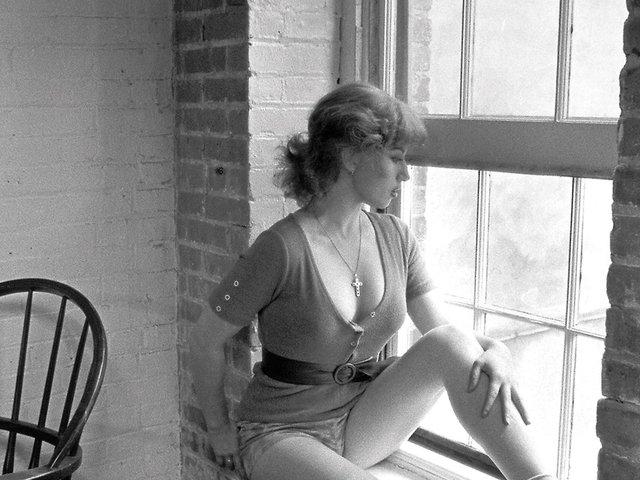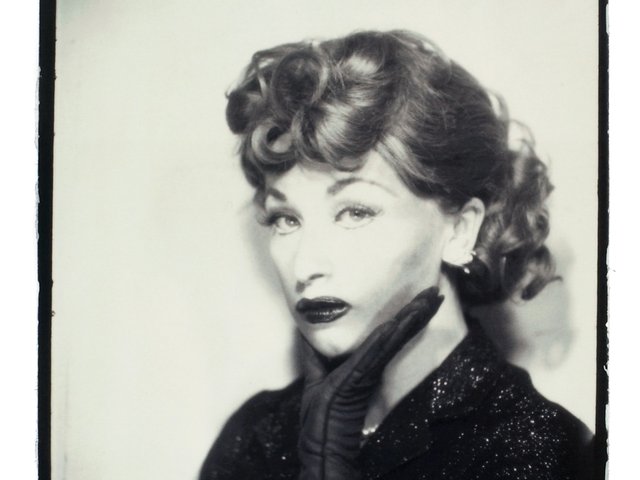The US photographer Cindy Sherman has launched a new initiative to preserve the physical and conceptual integrity of her work. The Cindy Sherman Legacy Project (CSLP), launching today (16 June), introduces a formal process for condition assessments and the controlled replacement of damaged prints, and will also host an online catalogue raisonné documenting her career.
In a statement to The Art Newspaper, Sherman described the project as “a mechanism that will ensure the integrity of my work is protected in perpetuity”. It is the first initiative of its kind in photography and could set a new benchmark for legacy care among artists working in lens-based media.
According to Margaret Lee, the CSLP’s director, the timing of its launch reflects Sherman’s long-standing concern about the fragility of photographic materials. “It has been many decades since Cindy Sherman printed her first colour chromogenic photographs, and even longer since her early black-and-white images,” Lee tells The Art Newspaper. “By launching this initiative now, Sherman can weigh in on how best to adapt her work to the ever-changing landscape of photographic printing technology.”
Museum leaders have welcomed the project. Eva Respini, the director of the Vancouver Art Gallery and a long-time curator of Sherman’s work, said: “The materiality of photographic works has long posed challenges for institutions. Sherman’s approach is both proactive and generous—she’s setting a precedent that others will follow.”

Cindy Sherman, Untitled Film Still #17, 1978 © Cindy Sherman. Courtesy the artist and Hauser & Wirth
Jeff Rosenheim, the curator in charge of the Department of Photographs at the Metropolitan Museum of Art, tells The Art Newspaper: “This gives collectors and museums the tools to care for Sherman’s work at a level equal to her artistic significance. It’s a thoughtful intervention in the evolving relationship between photography and conservation.”
Rosenheim adds: “This initiative has the potential to make a considerable contribution to the field, in particular by providing a long-term sustainable model for other artists working in the photographic medium who are eager to embrace the latest, most archival technology available at a given time. And who better to trail-blaze this approach than Cindy Sherman, one of the world’s most celebrated contemporary artists?”
The project responds to a growing concern in the photography market: the long-term preservation of ageing materials. Sherman, widely regarded as one of the most influential artists in post-war American art, is best known for her conceptual self-portraits that interrogate identity, artifice and gender. Her early gelatin silver prints from the 1970s and chromogenic prints from the 80s are particularly vulnerable to fading and deterioration.
Through the CSLP, collectors can submit Sherman works for assessment at a facility in New York. If a print is deemed eligible, the original—accompanied by its title, edition number, date and provenance—will be destroyed and replaced with a mint-condition, artist-signed reprint. Each reprint is reviewed and approved by Sherman. The process carries a one-off administrative fee of $10,000, plus production and shipping costs.
“The programme provides a framework for the legacy of artists working in the medium of photography,” Lee says. “It will become an invaluable resource to further understanding of Cindy Sherman’s work.”
Sherman remains directly involved in evaluating submissions and overseeing reprints. “Our rigorous set of criteria for eligibility is overseen by the artist herself,” Lee adds. “Each reprinted photo is colour-matched to the original 35mm slide or black-and-white negative. Every reprint is handled individually and held to the highest standards established by Cindy Sherman.”

Cindy Sherman, Untitled #92, 1981 © Cindy Sherman. Courtesy the artist and Hauser & Wirth
While the submission fee applies to private collectors, Lee confirmed it is waived for non-profit institutions and museums, who pay only for production and shipping. “This ensures the widest possible public access to the work in the condition the artist intended,” she says.
Sherman has worked with the same specialist print lab for more than 20 years. “The Legacy Project is a vehicle for ensuring there is seamless continuity in passing along this knowledge to future generations,” Lee says.
Alongside the reprinting service, the CSLP will develop and maintain the Cindy Sherman Catalogue Raisonné, the artist’s first authorised digital archive. The free-to-access platform will launch in stages and include high-resolution images, edition information, public holdings, provenance and contextual analysis for use by scholars, curators and collectors.
“The catalogue raisonné will document each work with images, exhibition history and scholarship,” Lee says. “Though Sherman is among the most published living artists, to have a complete record of her oeuvre will open new opportunities for academics and curators to fully engage with her work.”
According to Lee, the CSLP could inform broader conservation practices. “We’ve already had conversations with artists, curators, archivists and collectors,” she says. “There’s genuine enthusiasm to explore how the CSLP might inform best practices in photographic legacy care.”
Sherman adds: “By creating this project, we are providing a template for other artists working in the photographic medium.”






